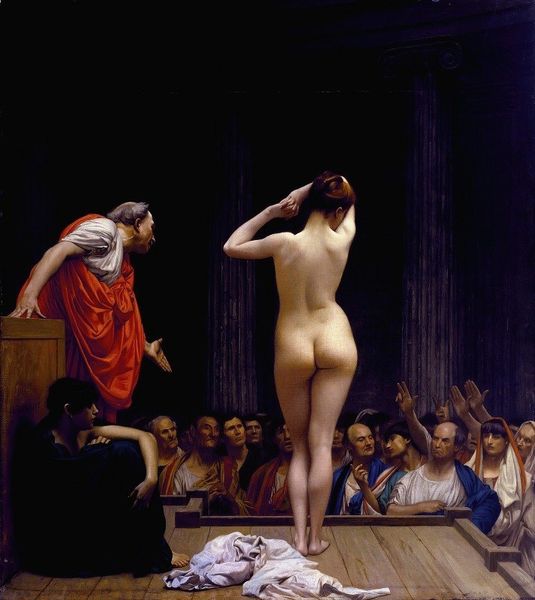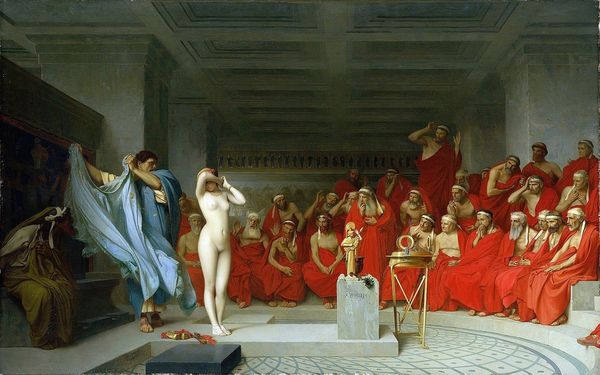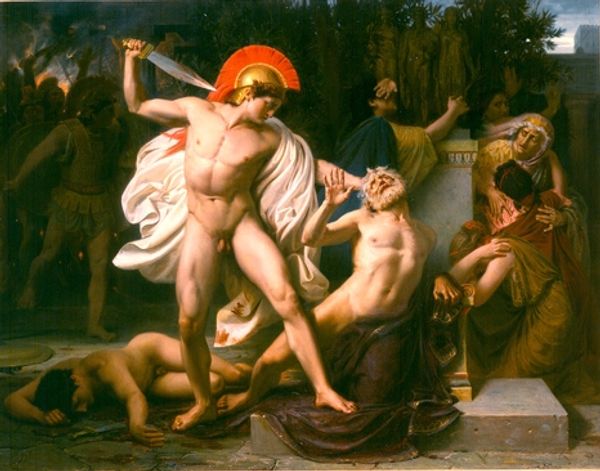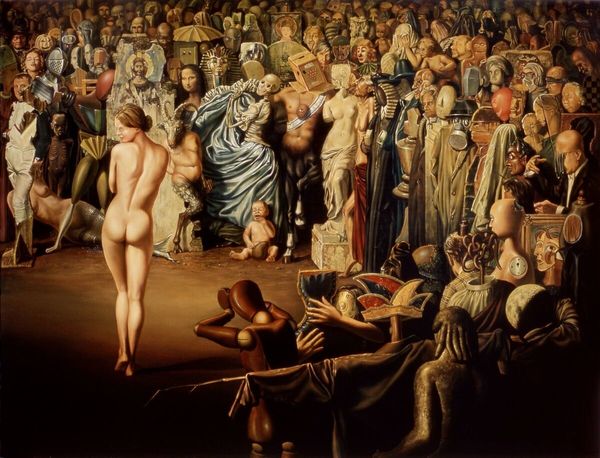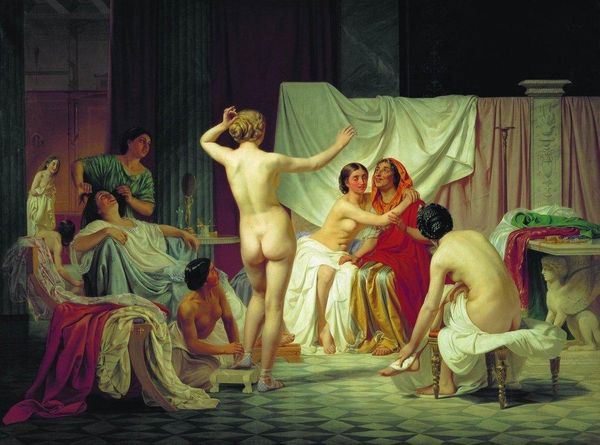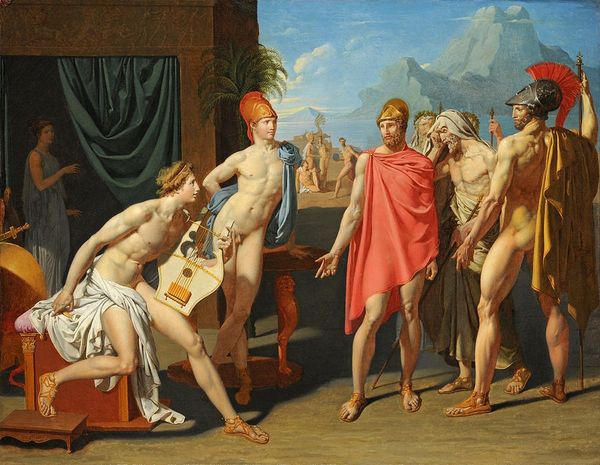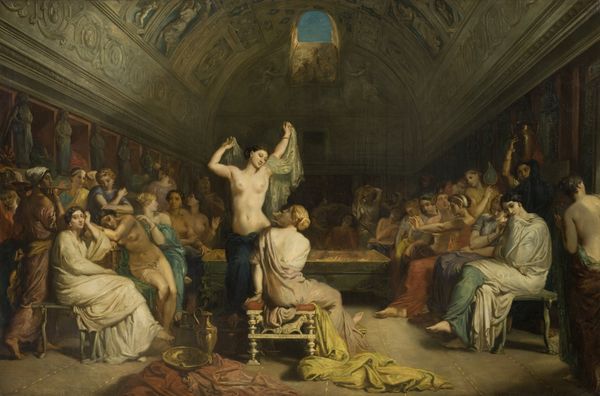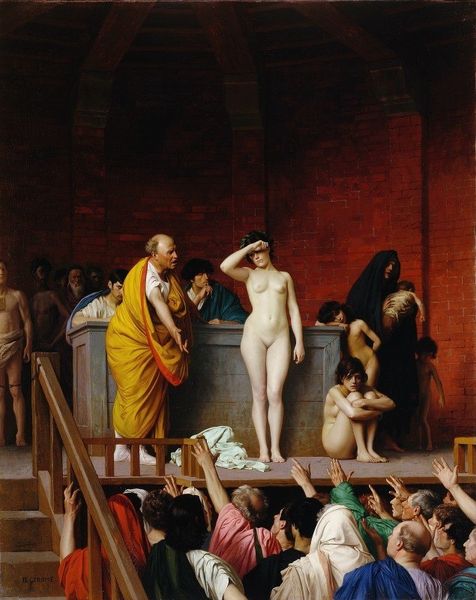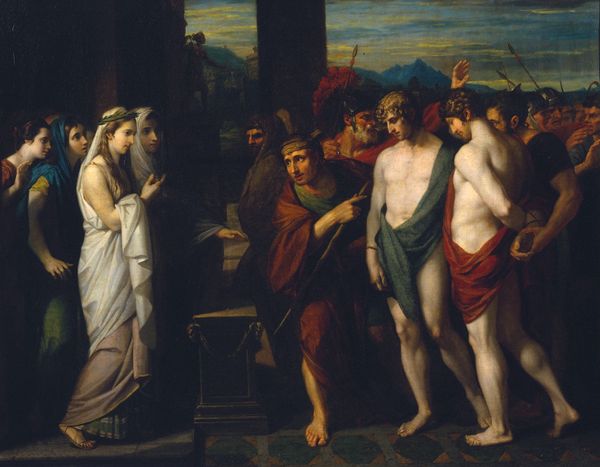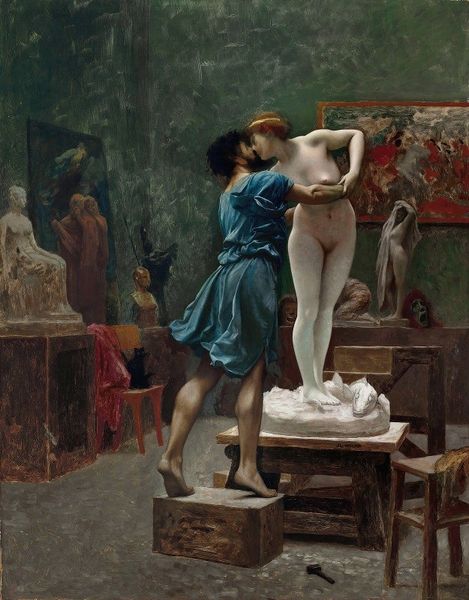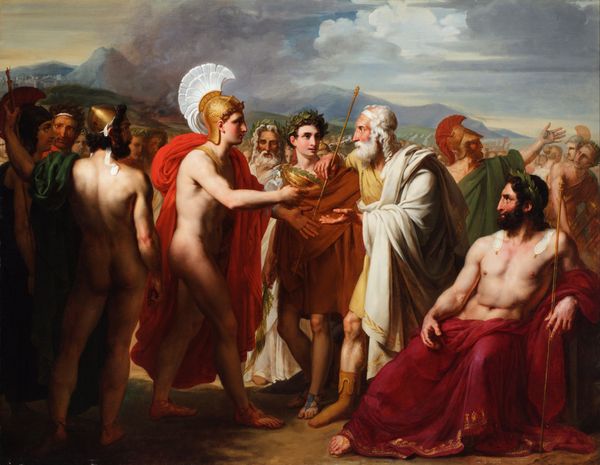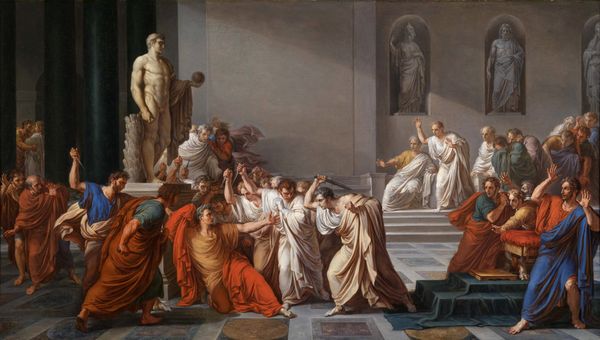
Copyright: Public domain
Jean-Léon Gérôme painted "A Roman Slave Market" with oil on canvas, likely in the 1880s. It depicts a slave market in ancient Rome, with a nude woman on display before a group of potential buyers. The image invites us to consider the role of art in representing historical subjects but also in negotiating modern social norms. Gérôme was a product of the French academic system, in which artists were trained to produce grand historical paintings. Yet, in the late 19th century, this genre was in decline, and artists were increasingly expected to produce work that was both visually appealing and morally uplifting. How do we read the politics of the image here? Is it a critique of the exploitation of women or is it a titillating image of a nude woman, packaged as historical genre painting? Historians engage with works like this by researching the cultural context in which it was made, analyzing the visual codes and cultural references it employs, and investigating the social and institutional forces that shaped its production and reception. The meaning of art is contingent on its social and institutional context.
Comments
No comments
Be the first to comment and join the conversation on the ultimate creative platform.
